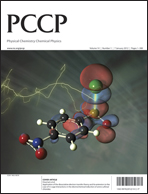汽车聚合物电解质燃料电池快速冷启动时的中子成像
IF 2.9
3区 化学
Q3 CHEMISTRY, PHYSICAL
引用次数: 0
摘要
从过冷水到冰的相变与能源设备在零度以下的电化学性能和使用寿命密切相关。乘用车燃料电池尤其面临这一问题,因为它们在冬季经常在零度以下的条件下启动和停止。然而,目前缺乏有关燃料电池堆内发生过程的可视化信息,也缺乏对如何提高冷启动期间安全性和性能的深入了解。在这项研究中,我们开发了一种操作中子成像系统,用于在冷启动期间可视化模拟燃料电池堆的汽车单电池内部的水分布情况。这是通过快速加热装置实现的。此外,我们还展示了在三种不同的零下温度下进行的冷启动测试,结果表明预处理残留水和冷启动后融水对快速冷启动性能有影响。本文章由计算机程序翻译,如有差异,请以英文原文为准。
Neutron imaging for automotive polymer electrolyte fuel cells during rapid cold starts
The phase transition from supercooled water to ice is closely related to the electrochemical performance and lifetime of an energy device at sub-zero temperatures. In particular, fuel cells for passenger cars face this issue because they are frequently started and stopped under sub-zero conditions during the winter season. However, there is a lack of visual information regarding the processes that occur within the fuel cell stack, and insight into how to improve the safety and performance during cold starts is lacking. In this study, we developed an operando neutron imaging system to visualise the water distribution inside an automotive single cell simulating a fuel cell stack during cold starts. This was achieved using a rapid heating unit. In addition, we showcased cold-start tests at three different sub-zero temperatures, and the obtained results suggest that pre-conditioning residual water and post-cold-start meltwater have an impact on the rapid cold-start performance.
求助全文
通过发布文献求助,成功后即可免费获取论文全文。
去求助
来源期刊

Physical Chemistry Chemical Physics
化学-物理:原子、分子和化学物理
CiteScore
5.50
自引率
9.10%
发文量
2675
审稿时长
2.0 months
期刊介绍:
Physical Chemistry Chemical Physics (PCCP) is an international journal co-owned by 19 physical chemistry and physics societies from around the world. This journal publishes original, cutting-edge research in physical chemistry, chemical physics and biophysical chemistry. To be suitable for publication in PCCP, articles must include significant innovation and/or insight into physical chemistry; this is the most important criterion that reviewers and Editors will judge against when evaluating submissions.
The journal has a broad scope and welcomes contributions spanning experiment, theory, computation and data science. Topical coverage includes spectroscopy, dynamics, kinetics, statistical mechanics, thermodynamics, electrochemistry, catalysis, surface science, quantum mechanics, quantum computing and machine learning. Interdisciplinary research areas such as polymers and soft matter, materials, nanoscience, energy, surfaces/interfaces, and biophysical chemistry are welcomed if they demonstrate significant innovation and/or insight into physical chemistry. Joined experimental/theoretical studies are particularly appreciated when complementary and based on up-to-date approaches.
 求助内容:
求助内容: 应助结果提醒方式:
应助结果提醒方式:


